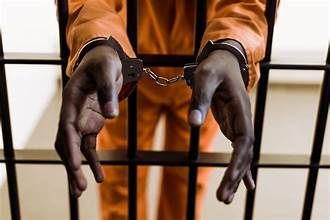Published by The Capital City Hues, June 20, 2024

I don’t think this is an insanity issue or a humanity issue. I think we have to face the reality that the so-called corrections industry in this country is not interested in anything but the cold cash it reaps from the public coffers. According to the World Prison Brief, the estimated cost of expenses associated with prison, parole and probation functions is about $80 billion.
This year, Wisconsinites have seen the resignation of Department of Corrections Secretary Kevin Carr and Waupun Prison Warden Randell Hepp. They’ve seen criminal charges against jail employees, continued understaffing and overcrowding, along with a series of probably preventable deaths. This volatile and costly situation is a far cry from what Governor Tony Evers promised when he stepped into office. Evers had campaigned on cutting the prison population in half.
We’ve long known the U.S. has the highest rate of incarceration of all industrialized countries. We should no longer accept the excuse that those who make decisions related to prison operations are unaware of the conditions they create and the outcomes they produce.
We also know that our government is not required to — nor does it voluntarily — collect data that helps inform policies that could make meaningful differences. That task has fallen on prison reformers who have worked tirelessly for decades to expose the inhumane conditions in jails and prisons. These groups have struggled to put a human face on the people in cages and to highlight their particular circumstances, whether it’s medical needs, mental health issues or guard abuse.
The crux of the issue is that the billions of tax dollars flying into the pockets of legislators, lobbyists and contractor friends are too lucrative to give up, no matter what the human costs. There is no interest in reducing prison populations. Warm bodies means more money. There is no interest in addressing the critical issue of staffing. Less salaries, more money.
No state can claim to be serious about mass incarceration without instituting supporting policies and practices. One major policy change starts with the prosecutor’s office who controls the flow of detainees to jail and the convicted to prison. This is where you vividly see how the prison industrial complex (police, courts and prisons) works for its disgusting self-preservation.
State Representative Ryan Clancy has part of it right when he reiterates the goal is ‘to incarcerate fewer people.” The public must be explicit in its demands if they are to actualize the transformation that they seek. Politicians will move their mouths to say anything and most times, it moves to parrot a false narrative about crime and how they will get tough on it. They just need more money.
The local, state and federal budgets must reduce the allocations going into policing and the warehousing of citizens. The billions of dollars being funneled into these systems are not reducing crime and are not making citizens feel safe. The funds are definitely not being invested in the development of humans and the environments in which they live and work.
There are crime prevention models in other civilized societies that are both humane and successful. Justice-seeking people know these failed systems are corrupt and unworkable. When we don’t hold these gatekeepers accountable, we become complicit in the obvious moral bankruptcy and political corruption going on right in front of our faces.
Recent Posts

Who can stop the genocide in Gaza?
If the ultimate goals are peace and sovereign respect, new thinking is mandatory to re-imagine how we get there.We are past the one year anniversary of the Hamas attack on Israel. To mark the deadly occasion, Vice-President Kamala Harris planted a pomegranate tree at her home and President Joe Biden lit a candle at the White House. The initial calls for a ceasefire now seem woefully inadequate and definitely ineffective. It’s time to light some fire under Congress.

Guests: Betty Douglas & Richard Von Glahn – Bringing Economic Relief to Missouri Families – October 16, 2024
Guests: Betty Douglas & Richard Von Glahn – Bringing Economic Relief to Missouri Families – October 16, 2024

Guest: Ahlam Jaber – The Exploding Middle East – October 9, 2024
Guest: Ahlam Jaber – The Exploding Middle East – October 9, 2024
Get Updates
